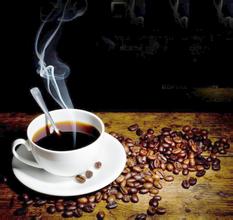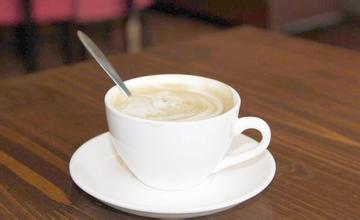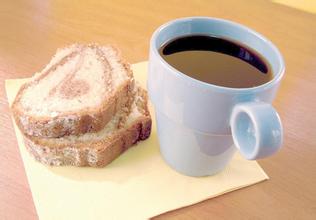Introduction to the planting environment of aromatic and rich Kenyan coffee flavor
Kenya maintains a presidential system of government. Since independence, the Kenyan League has been in power for a long time. After changing to a multi-party system in 1991, the Kenyan League won two consecutive multi-party elections in 1992 and 1997, and Moi was re-elected president. In the third multi-party general election held in December 2002, the opposition coalition National Rainbow Alliance (all League) defeated the Kenya League, Kibaki was elected president, and the League won a majority of seats in parliament. After the general election in December 2007, national riots were caused by disputes over the election results between the ruling National Unity Party and the opposition Orange Democratic Movement. Under the mediation of former UN Secretary General Kofi Annan, the two parties to the dispute signed the Agreement on the principles of Partnership of the Coalition Government on February 28, 2008 and formed a coalition government on April 13. The leader of the ruling party, Mwai Kibaki, is president, and the leader of the opposition, Odinga, is the new prime minister. In March 2013, Kenya held a new general election, "Jubilee Alliance" candidate Kenyatta defeated the "Alliance for Reform and Democracy" candidate Odinga, was elected the fourth president of Kenya. On April 9, Kenyatta was sworn in. [5]
Constitution
The Constitution of the Republic was promulgated in 1964 and has been amended 30 times by September 2014. In June 1982, Ken established an one-party system by amending the constitution. In December 1991, it was changed to a multi-party system, which stipulates that the president is willing to be a multi-party democratic country, and the president is the head of state, head of government and commander-in-chief of the armed forces for a term of five years, and shall not be re-elected for more than two terms; the president-elect shall, while obtaining a majority of votes, win more than 25% of the votes in five of the country's eight provinces; the president has the highest executive power and the power of appointment and removal, and has the power to convene or dissolve parliament; the president and cabinet are collectively responsible to parliament. Citizens enjoy freedom of religious belief, expression, assembly, association and movement. Since 1997, the opposition party in Kenya has strongly demanded a comprehensive revision of the constitution on the grounds that the constitution does not meet the requirements of the multi-party system. In September 1997, Ken promulgated the draft Constitutional Amendment Commission Bill and began to amend the Constitution. In February 2006, President Kibaki announced the establishment of a new constitutional amendment committee to replace the original constitutional amendment commission whose term of office expires. Since February 29, 2008, the disputed parties to the Kenyan general election have entered the fourth agenda of the mediation "road map" under Annan mediation (that is, the resolution of "long-term problems", including land, constitutional amendment, tribal conflicts, etc.). In May 2008, the two sides indicated that the negotiations on agenda 4 were drawing to a close and had basically reached consensus in the areas of land reform, constitutional amendment and poverty reduction. In November 2009, the National Dialogue and Reconciliation Commission approved the texts of the Kenya Constitutional Amendment Act 2008 and the Kenyan Constitutional Amendment 2008. In April 2010, the draft constitution of Kenya was approved by Parliament, passed a referendum in August and formally promulgated and implemented, its main contents include: maintaining the presidential system of government, no longer establishing the post of prime minister, but the presidential power has been weakened; the parliament has been changed into a bicameral system, with the addition of a Senate; the administrative division has been changed from the central, provincial, regional, district, township and village levels to the central and county levels.
Kenyan coffee beans the Kenyan government takes the coffee industry very seriously, where it is illegal to cut down or destroy coffee trees. Kenyan coffee buyers are world-class high-quality coffee buyers, and no other country can grow, produce and sell coffee on a continuous basis like Kenya. All coffee beans are first acquired by the Kenya Coffee Commission (CoffeeBoardofKenya, CBK), where they are identified, graded, and then sold at weekly auctions, where they are no longer graded. The Kenya Coffee Commission only acts as an agent to collect coffee samples and distribute them to buyers so that they can determine the price and quality. The auction in Nairobi is for private exporters, and the Kenya Coffee Commission pays growers a price below the market price. The best coffee grade is bean berry coffee (PB), followed by AA++, AA+, AA, AB and so on. The fine coffee is shiny, delicious and slightly alcoholic. Auctions are also organized to meet the needs of dispatchers. This kind of auction usually has a small auction volume (3-6 tons each), with samples with the grower's logo for buyers to enjoy. After the auction, the exporters pack according to different flavors, different qualities and the quantity required by the blenders. This provides a great deal of flexibility for the dispatcher. Quality-oriented Germans and Scandinavians are long-term buyers of Kenyan coffee. There are two types of coffee farms in Kenya. One is a large plantation covering an area of more than five acres, but the average elevation is low. In the case of Kenyan coffee, the coffee beans in large farms are of medium quality. The best Kenya beans come from small farms, most of which are located in the foothills or volcanic slopes above 5,000 to 6,000 feet. Each small farmer has a capacity of only 20 to 70 bags per season and is unable to invest in expensive washing plants, but small farmers are very United. Hundreds or thousands of households are gathered to set up cooperative farms, and the government pays for the construction of washing treatment plants, and the coffee fruits picked by small farmers are sent to cooperative farms for unified processing. First remove the half-ripe or rotten fruit, then peel, ferment, decompose the flesh, remove the coffee beans, then dry and polish, the whole process is supervised by the official Coffee Administration, which ensures the quality of Kenyan coffee. Kenya bean washing processing technology and high standard quality control have always been an example of bean-producing countries.

Important Notice :
前街咖啡 FrontStreet Coffee has moved to new addredd:
FrontStreet Coffee Address: 315,Donghua East Road,GuangZhou
Tel:020 38364473
- Prev

Introduction to the planting environment of Brazilian coffee boutique coffee bean flavor and taste producing areas
After Brazil's independence, the United States was the first country to recognize Brazil. Pakistan maintains traditional and close political, economic and trade relations with the United States, and advocates the establishment of an equal and mature partnership with the United States on the basis of equality and mutual respect. The United States is Pakistan's major trading partner and largest creditor. In 2010, Pakistan-US trade totaled US $46.711 billion, accounting for 12.2% of Pakistan's total foreign trade. As of 2008
- Next

Introduction to the planting environment of Rwanda boutique coffee bean flavor manor with excellent evenness
Rwanda has tin, tungsten, niobium, tantalum, Beryl, gold and so on. The storage of tin is about 100000 tons. Peat reserves are estimated at 30 million tons. Lake Kivu has natural gas reserves of about 60 billion cubic meters. The Niagabango tungsten deposit is the largest tungsten mine in Africa. The forest covers an area of about 620000 hectares, accounting for 29 per cent of the national area, and is one of the important natural resources of Rwanda. [3] Plant Luwang
Related
- Detailed explanation of Jadeite planting Land in Panamanian Jadeite Manor introduction to the grading system of Jadeite competitive bidding, Red bid, Green bid and Rose Summer
- Story of Coffee planting in Brenka region of Costa Rica Stonehenge Manor anaerobic heavy honey treatment of flavor mouth
- What's on the barrel of Blue Mountain Coffee beans?
- Can American coffee also pull flowers? How to use hot American style to pull out a good-looking pattern?
- Can you make a cold extract with coffee beans? What is the right proportion for cold-extracted coffee formula?
- Indonesian PWN Gold Mandrine Coffee Origin Features Flavor How to Chong? Mandolin coffee is American.
- A brief introduction to the flavor characteristics of Brazilian yellow bourbon coffee beans
- What is the effect of different water quality on the flavor of cold-extracted coffee? What kind of water is best for brewing coffee?
- Why do you think of Rose Summer whenever you mention Panamanian coffee?
- Introduction to the characteristics of authentic blue mountain coffee bean producing areas? What is the CIB Coffee Authority in Jamaica?

